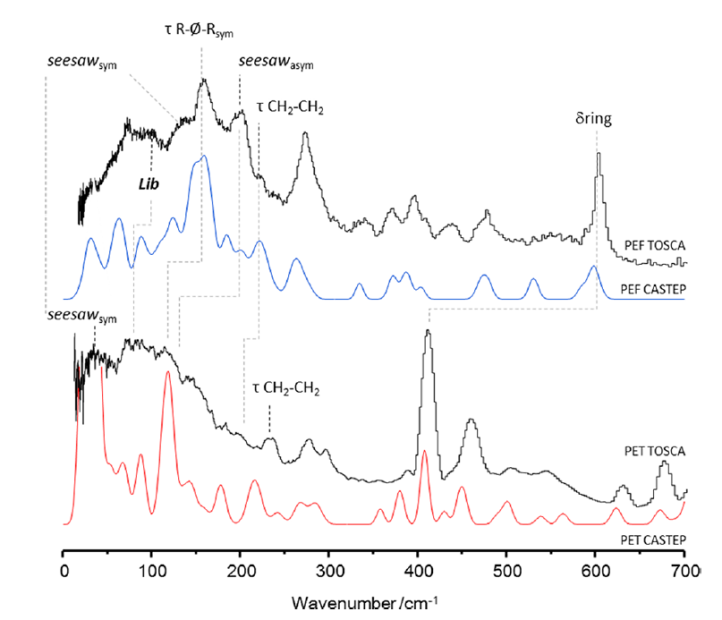Our plastic habit has come under increasing scrutiny in recent years as the movement against plastic waste gathers momentum. But it's not just the amount of plastic we produce that's a huge problem – it's how we make it. Fossil resources provide the feedstock materials for plastics and also power the plastic manufacturing processes. The plastic industry requires a staggering amount of oil for this purpose, annually using the same quantity as the global aviation sector.
In order to limit the environmental impact of plastics we must rethink our approach to making them. Dr Catarina Araujo and Dr Andreia Sousa from CICECO - Aveiro Institute of Materials explain, “ the production of fossil fuel plastics is fraught with many complex challenges. The way forward calls for a paradigm shift in polymer production to bring forth a new class of sustainable materials derived from renewable resources which are intended to gradually phase out their petrochemical counterparts. “
Poly(ethylene 2,5-furandicarboxylate), or PEF, may mean nothing to the vast majority of the population but this sustainable plastic is making a big name for itself in the food and beverage industry. Hailed as a potential replacement to PET, a petro-based plastic widely used in bottles, this 100% bio-based material is derived from plant sugars.
The plastic's low carbon footprint isn't the only reason this material has received so much interest. PEF traps oxygen 10 times better than petro-based plastic PET and it's also 20 times less permeable to carbon dioxide – leading to a longer shelf life of packaged products. Manufacturing giants Coca-Cola and Danone have partnered with bioplastics manufacturer Synvina to develop a cost effective process for mass production, with a commercial-scale plant expected to be operational by 2023-2024.
Despite the increasing relevance of this low carbon plastic we still don't fully understand some of its unique characteristics. With this motivation researchers from Portugal have used a sophisticated neutron technique to learn more on the properties of this sugar-based plastic.
Studying polymer vibrations
Plastic is the common name for synthetic polymers, comprising of smaller repeating units that form a large molecular chain. To better understand the differences between petro-based plastic PET and sugar-based plastic PEF we must study the dynamics of their polymer chains.
Researchers used the instrument TOSCA at ISIS Neutron and Muon Source to carry out inelastic neutron scattering (INS) measurements. INS records the change in the energy of the neutron as it scatters from a sample and the technique can be used to study the collective movements of whole polymer chains relative to one another. In this study the INS spectrum of sugar-based plastic PEF was taken for the first time, and a spectrum of petro-based plastic PET was also recorded.
Less flexible polymer chains = enhanced barrier properties
Comparison of the two INS spectra revealed distinct vibrational motions of the polymer chains, which relates to differences in their macroscopic properties. “Gas permeability directly correlates with chain mobility, which is reflected in several low-frequency vibrational modes. (…) Of particular relevance are those vibrational modes involving the furanic ring ('ring flipping' mode) and the glycolic moiety ('seesaw' mode which) reflect PEF's stiffer polymeric chains, relative to PET, a feature contributing to the lower gas permeability of PEF" explain Dr Catarina Araujo and Dr Andreia Sousa.

|
Figure: Low-frequency region of the INS spectra of PEF (above,black) and PET (below, black) collected using the TOSCA instrument, at 20 K. Estimated INS intensities for PEF (above,blue) and PET (below, red) as estimated in silico using the CASTEP software. The vibrational modes that occur in both polymers are assigned. Reprinted with permission from Catarina F. Araujo, et al. Macromolecules 2018 51 (9), 3515-3526 DOI: 10.1021/acs.macromol.8b00192 Copyright 2018 American Chemical Society.
|
The findings in this study support the current view that sugar-based plastic PEF has polymer chains less flexible than those of petro-based plastic PET. Thus they have greater resistance to gas penetration resulting in enhanced barrier properties - which makes them well suited for packaging applications.
This research has paved the way for future studies on sugar-based plastic composites, blends, and nanoparticles, among other relevant materials, through the lens of vibrational spectroscopy. With our plastic addiction showing no sign of slowing, studies like this into low carbon plastics have never been more important.
Further information
Find more information on our spectrometer TOSCA on the webpage
Read the full research publication here: “Inside PEF: Chain Conformation and Dynamics in Crystalline and Amorphous Domains" Catarina F. Araujo, et al. Macromolecules 2018 51 (9), 3515-3526 DOI: 10.1021/acs.macromol.8b00192
Browse all our science highlights here.
